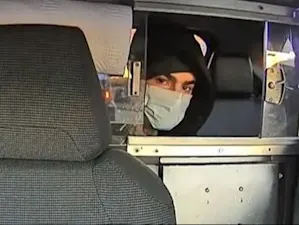
Criminals Are Stealing Your Money With Card Cracking
Card cracking is an insidious form of fraud that preys on the promise of easy money. This alarming trend has been gaining traction, especially among young adults, and poses significant risks to both individual consumers and e-commerce businesses. Understanding how card cracking works and protect yourself is from this painful experience.
What Is Card Cracking?
Card cracking, also known as carding, involves criminals soliciting individuals to provide their debit card information, promising quick cash in return. These fraudsters often use social media platforms like Facebook, Twitter, and Instagram to lure victims, predominantly targeting people aged 19-25, college students, newly enlisted military personnel, and single parents.
How Does Card Cracking Work?
In a typical card cracking scam, the "victim" provides their debit card, PIN, and online banking credentials to the fraudster. The scammer then deposits fake checks using mobile deposit and quickly withdraws the funds at an ATM. To cover up the fraud, the victim reports the card as stolen or the credentials as compromised, prompting the bank to reimburse the "lost" funds. The fraudster then gives the victim a portion of the stolen money.
The E-Commerce Angle
Card cracking also extends into the realm of e-commerce. Here, fraudsters use stolen or partial credit card details to make unauthorized purchases. These details are often acquired through data breaches, theft, or the dark web. Using automated tools, criminals attempt various combinations of card information to complete transactions. This process, known as brute-forcing, is highly effective and can rapidly drain accounts.
Here's how you can prevent card cracking:
-
Avoiding Online Solicitations: The first line of defense against card cracking is awareness. Never respond to online offers promising easy money in exchange for your banking information. Such advertisements are a clear red flag of a potential scam.
-
Secure Your Card Information: Always keep your debit and credit card information private. Do not share your PIN or online banking credentials with anyone. Utilizing strong, unique passwords for your banking apps and monitoring your accounts regularly can help detect and prevent unauthorized access.
-
Implementing Fraud Prevention Tools: For e-commerce businesses, implementing measures like Address Verification System (AVS) and Credit Verification Value (CVV) tracking during the payment process can help identify and block fraudulent transactions. Additionally, using fraud detection tools and device identification can further protect against automated card-cracking attempts.
Card cracking is a growing threat that exploits both individuals and businesses. By understanding how these scams operate and taking proactive measures to protect your information, you can help safeguard against this pervasive form of fraud. Remember, if an offer seems too good to be true, it probably is — and it might just be card cracking.
References: Card Cracking Scams | What is Card Cracking? How to Prevent It























